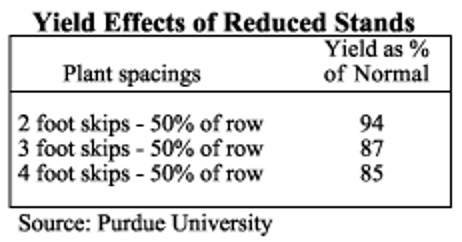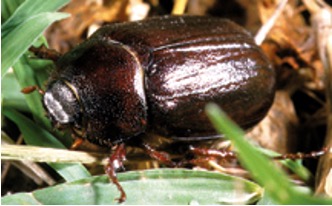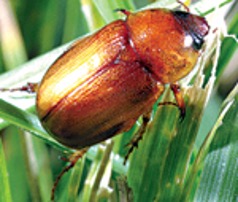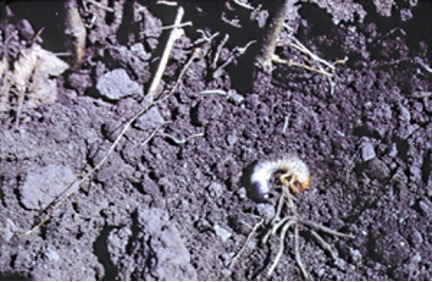White Grubs (Soybean)
Phyllophaga spp., Cyclocephala spp., and Popillia japonica Newman
Search the Pest & Crop Newsletter
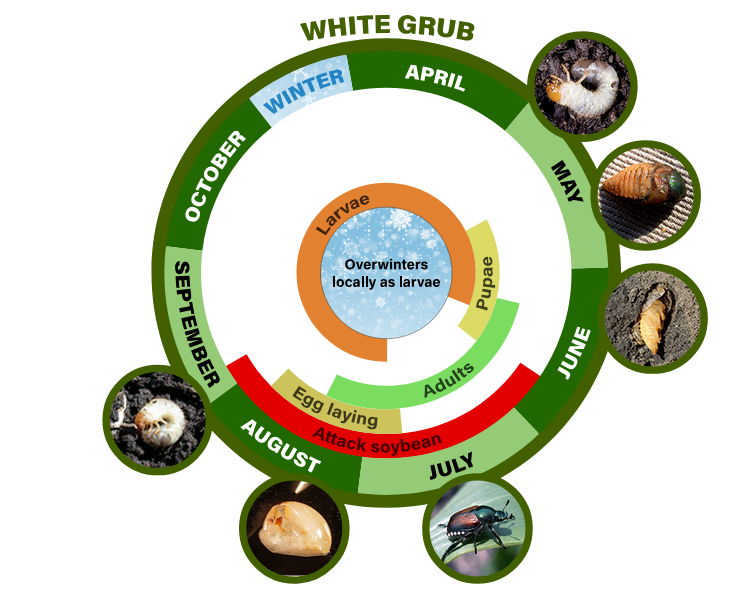
The ability to see these full-sized life-cycle images is currently disabled to resolve an issue.
Appearance and Life History
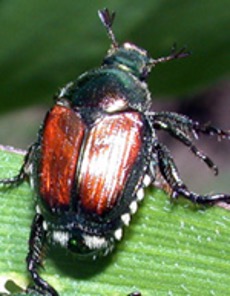
Photo by B. Christine
White grubs are occasional pests of soybean seedlings. They typically attack soybean fields that were in sod or some other cover crop (May/June beetles, masked chafer, or Japanese beetle), in set-aside (May/June beetles, masked chafer, or Japanese beetle) or in soybean (Japanese beetle) the previous season. Several species of white grubs are found in the Midwest. Proper identification to species is important since differences in life cycles and degree of crop damage may be seen.
White grubs are the immature forms of scarab beetles (May/June beetles, masked chafer, and Japanese beetle). These grubs are 1/4 to over 1 inch (6 to 25 mm) long, and are white with brown heads and have six prominent legs. Their bodies typically are curved into a “C”-shape.
May/June beetles have a two to three-year grub cycle (grub stage from August through the next year and sometimes during part of third year), while masked chafer and Japanese beetle have a one-year life cycle (grub stage from late July through mid-June the following year).
Damage
White grub damage typically appears as gaps in rows where plants fail to emerge and/or as wilted, discolored, or dead seedlings.
Japanese beetle grubs are not known to cause economic damage to soybean fields. However, they may be present in large numbers in spotty areas of fields, e.g., sandy knobs and/or weedy patches.
Sampling Method
- Before planting:
- If soybean is to be planted into a high risk field, such as sod or set-aside, soil samples should be taken and examined for white grubs before planting.
- Place the soil on a piece of black plastic or cloth and search through the soil, identifying white grubs found.
- After planting:
- Where damage is found following plant emergence, look for grubs and damaged plants in 5 randomly selected areas.
- Place the soil and plant samples on black plastic or cloth determining the species of grub.
- Estimate the plant stand that remains in the field.
- Use the following drawings of raster patterns, and a magnifying lens, to determine the species of white grub(s). If needed, contact your local extension service for assistance with identification.
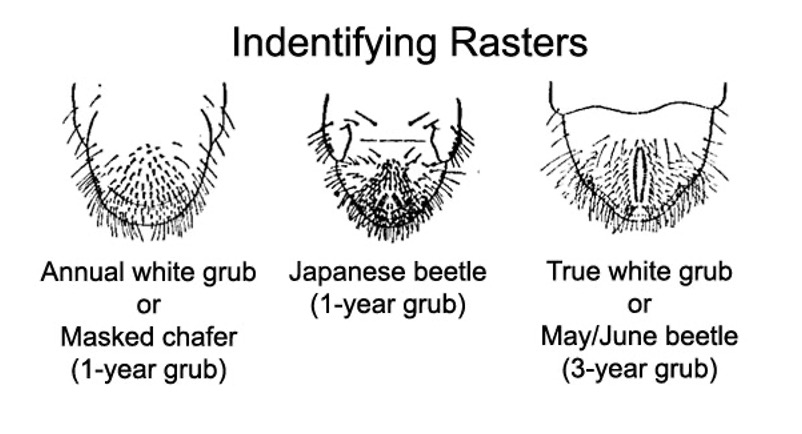
Management Guidelines
Soybean Insect Control Recommendations: E-series 77-W (PDF)
- Before planting. May/June beetle grubs found prior to planting may signal a potential problem. No planting-time insecticides registered for soybean have white grubs on the label. Therefore, if high numbers of May/June beetle or masked chafer grubs are noted in fields to be planted to soybean, plant corn or some other crop that has insecticides with white grubs on the label. If only Japanese beetle grubs are found, it should be safe to plant soybean as long as it is not extremely early (however, continue to watch infested fields).
- White grub problems are most likely in fields previously in hay or pasture, or fields which had a late season weed problem or cover crop the previous year. Such fields should be closely watched during tillage operations for the presence of grubs. Too, birds will often be seen feeding in the soil following tillage implements.
- After planting. There are no rescue treatments available for white grubs in soybean. The decision to replant should be based on the remaining healthy plant population, the date, yield expectations, etc. Where planting in wide rows, it may be feasible to replant down the middle of the rows without destroying the healthy plants in the original planting. The result would be the equivalent to narrow row soybean.
- The following table may help in making replanting decisions.
